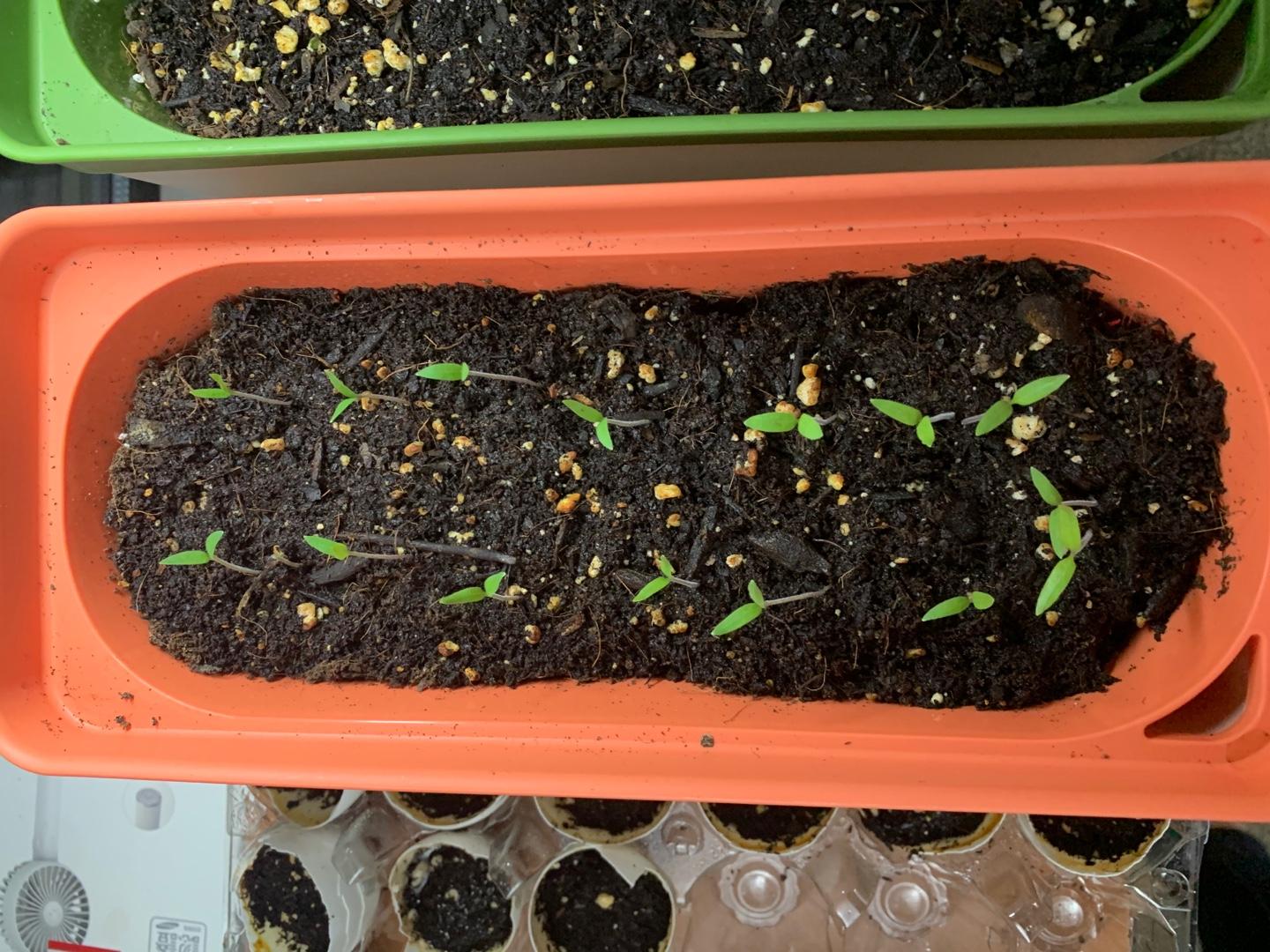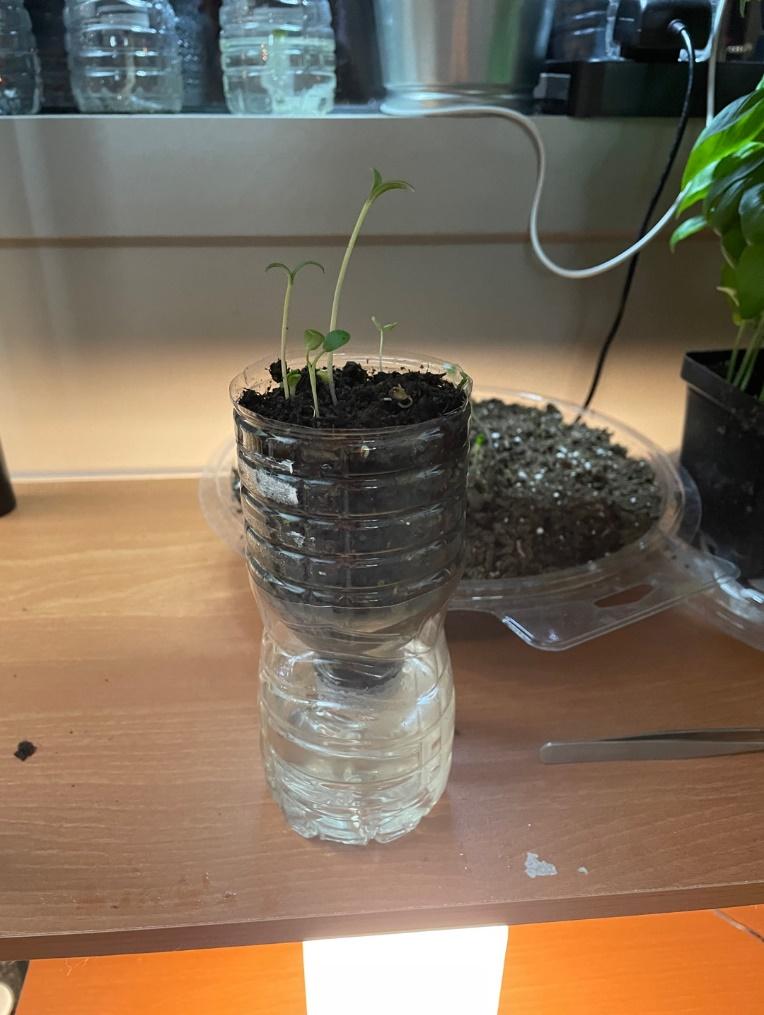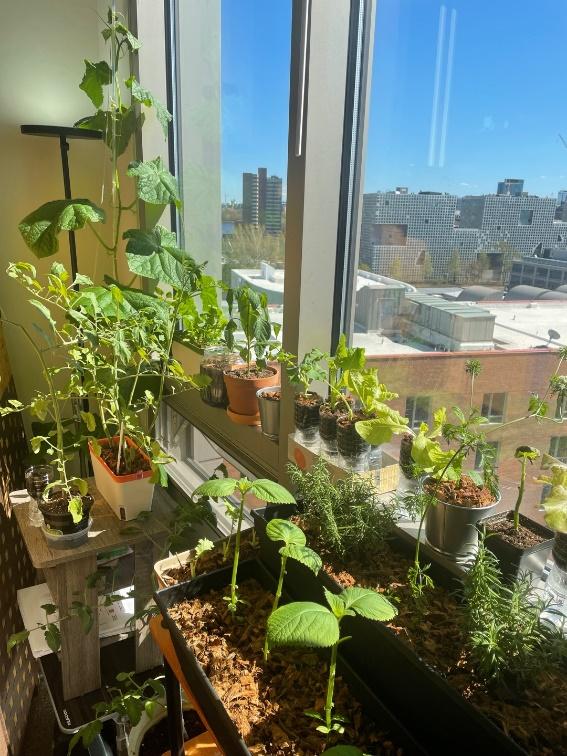
Nurturing yourself by nurturing some greens
How growing an indoor vegetable garden from scratch became a life-affirming engineering project during the COVID lockdowns
Grad student life is filled with significant transitions like qualification exams, new roommates, selecting PIs and committee members, and more. But the uncertainties of grad school life suddenly became much more prominent with COVID-19. As an experimentalist who does my research in a lab, I was incredibly lost, especially in the first few months of the pandemic when everything was locked down. Moreover, I lived in a residence hall without roommates—I’ve never appreciated being around other living beings, like humans, animals, or plants.
As an engineer, I’ve always solved a new problem by coming up with a new method to solve the problem. A month stuck in a dorm room was more than enough time to realize that all the stress release tricks I used to go to included in-person interactions: dancing, going to karaoke nights, concerts, and traveling. None of these were an option for almost two years. My mood was often out of my control, leading me into depressive thoughts, and I was not sure what to do about it. How could I come up with a new method to solve this new problem?
While desperate to find a breakthrough, I got a couple of succulents from the department during the Random Acts of Kindness (RAK) week. It got me thinking that maybe I could find some seeds and grow them. I started my garden with common veggies such as lettuces, cucumber, and kale. I learned many of the necessary techniques for maintaining a garden from YouTube videos and blog posts. Learning these techniques actually felt like doing a literature review for a new research field. Each plant needed different conditions for sprouting, such as the depth of the soil, the amount of water, the soil type, etc. I was so happy to start my new project, exploring, trying, failing, and succeeding, experiencing all the highs and lows of research that I missed a lot from the lab. Despite the similarity to research, witnessing and contributing to the growth of new life was something new to me, filling me with awe.
Figure 1. Cherry tomato sprouts
After my plants began to sprout, I wanted to share this tremendous joy with my friends. However, the biggest hurdle to start growing plants without any experience (or even with experience) is watering your plants at the right frequency: new problem! I therefore became interested in the concept of self-watering pots. The key concept was keeping the soil moist but not soggy. This led me to think about the concept of capillary action, which is the ascension of liquids via thin tubes or permeable substances by adhesive and cohesive forces between the liquid and the substance. The humidity of the soil would control the driving force of the capillarity. In other words, if the soil is dry, the adhesion of water and soil will be more favorable. On the other hand, if the soil is moist, the interaction with water will be poor, preventing more water from penetrating the soil.
Once I was clear on the concept, the method for making self-watering pots became much more straightforward. First, two separate compartments for the plant mix, soil, and water were prepared by cutting off the bottom third of a typical plastic water bottle. Placing the upper two-thirds of the bottle upside-down, the soil is put on top, and the water goes in the bottom third, the bottom and the top separated by the cap. To supply water to the top, I connected a wet wipe between the water and the soil via a small hole in the cap. As the adhesive force between water and the wipe is stronger than cohesive force between water molecules, water can rise via the textile network of wipes by capillary action. Plastic water bottles were perfect for making these pots since I had a lot of them, they are easy to work with, and they are transparent, making it easy to tell when to add more water to the pot. Though it depends on what plant is in a pot, this self-watering pot can typically last around two weeks without watering once it is filled. With these pots, life became so much easier for my friends to start planting.
Figure 2. Self-watering pot made of a plastic water bottle
Nevertheless, this was not the end but the beginning of a new problem. I underestimated how fast some plants grow, especially in ways I couldn’t control, and I made the mistake of sprouting too many seeds at once. After a month or two, I realized that there was not enough space for all of my plants near the window anymore. I had to reorganize them in multiple lines for all the plants to get enough sunlight. Also, plants need regular pruning to grow indoors. Different plants require different pruning techniques, so I had to teach myself how to do it right.
Figure 3. My organized garden one day in Spring
Similar to my research as an engineer, the most crucial aspect of this new hobby was ‘what do I do with this?’ Plants are great company and give my room a nice view. However, fruits and greens are even better! Eating lettuce, kale, and more every week made my meals healthier, and I could share some veggies with my friends as well.
Gardening during the pandemic helped me rebuild the confidence I needed to re-establish my research project. The process of self-learning and optimizing during this journey paralleled what research is like. Research requires resilience and problem-solving in the face of unexpected situations — all capabilities that I honed through gardening. I love these plants and am proud of myself for building this garden, a feeling which during the pandemic I had not felt for a very long time. If you get some sunlight in your room or office, why not start your own garden?
Share this post:



